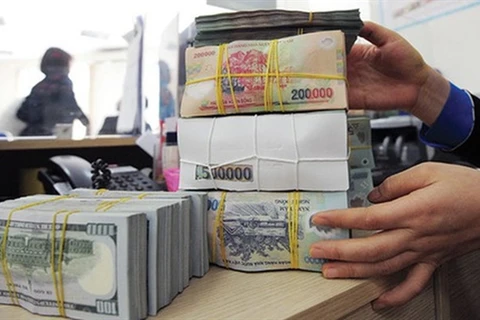Hanoi (VNA) - The State Bank of Vietnam (SBV) has flexibly operated monetary policy tools to maintain liquidity for the banking system, contributing to stabilising and recovering credit growth in the context of unpredictable impacts of the COVID-19 pandemic.
The information was announced by the SBV at a press conference on June 21 to review the banking sector’s activities in the first half of 2021.
According to SBV Deputy Governor Dao Minh Tu, thanks to synchronous management solutions, as of June 15, total credit in the economy expanded 5.1 percent from the end of 2020. The credit growth rate in the same period last year was only 2.26 percent
Attention has been paid to strictly controlling credit for areas with potentially high risks, and taking measures to remove difficulties facing enterprises and people in accessing bank credit, he said.
Total M2 payment vehicle - one of the tools to measure the level of "pumping money" into the economy from the banking system – in the period increased by 3.96 percent compared to the end of 2020 and surged 14.27 percent over the same period last year. The credit institution system maintains smooth liquidity.
The sector has continued to manage interest rates in line with the macro-economic balance, inflation, market movements and the objectives of the monetary policy, contributing to cutting capital costs for people, businesses and the national economy.
A series of measures have been implemented to support borrowers amidst the COVID-19 pandemic, helping them restructure cash flows, and revive production and business activities.
As of May 31, credit institutions have rescheduled debt repayments for 257,602 borrowers with total outstanding loans of over 336.6 trillion VND (14.61 billion USD), exempted or reduced interests for 676,690 customers with total outstanding loans of over 1.2 quadrillion VND, provided new loans with low interest rates totaling over 3.5 quadrillion VND for nearly 481,000 borrowers.
Regarding the form of payment and transaction, Director of the SBV’s Payment Department Pham Tien Dung said non-cash payment activities have been expanded in the last six months.
Payment transactions via Internet channels surged by 65.9 percent in volume and 31.2 percent in value, while payment transactions via smart phone jumped by 86.3 percent in volume, and 123.1 percent in value.
Payments via QR Code increased by 95.7 percent in volume, and 181.5 percent in value, Dung added.
The SBV said it will continue to keep close watch on the macro-economic and monetary situation, as well as local and global developments of the pandemic, thus giving appropriate orientations in credit management and structure, towards promoting sustainable economic growth and development.
Notably, the banking sector will tighten control of credit in potentially risky areas such as real estate, build-operation-transfer (BOT) and build- transfer (BT) projects, and securities, Tu said.
He asked credit institutions to intensify management of credit quality, and implementing measures to curb bad debts./.
VNA
























